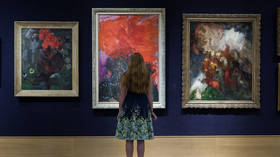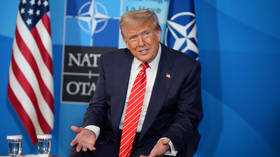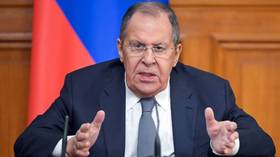NFTs create risk of art-related money laundering – study

The US Department of the Treasury says the non-fungible tokens (NFTs) market could become a platform for money laundering using high-value art in a study published on Friday.
“The emerging digital art market, such as the use of non-fungible tokens (NFT), may present new risks, depending on the structure and market incentives,” the department stated in a press release. NFTs are units of digital data stored and traded online, which mostly comprise photos, videos and audio recordings.
In their 40-page study, analysts say high-value art is already used for money laundering but, most likely, not for financing terrorism. Physical art is easy to transport, and a number of art pieces have already been used to cover up illegally obtained funds, the study said.
Meanwhile, NFTs and the broader digital art sector could be used to facilitate more illegal transactions in the high-value art market, the study suggests.
“Recent sales of high-profile pieces of physical and digital art involving NFTs, including NFT-authenticated works such as Beeple’s ‘Everydays: The First 5000 Days’, which sold at a Christie’s auction for more than $69 million, indicate that this nascent art sector has reached similar valuations as traditional art mediums,” the document read.
The authors stated that licensed auction houses and art dealers “are increasingly offering NFTs,” pointing to platforms like Dapper Labs, OpenSea and SuperRare. However, if these platforms are considered virtual asset service providers (VASP) by the Financial Action Task Force (FATF), and are regulated as such, they may become subject to existing anti-money laundering (AML) laws. Still, the study says there are ways for art-related digital transactions to bypass regulators.
“NFTs can be used to conduct self-laundering, where criminals may purchase an NFT with illicit funds and proceed to transact with themselves to create records of sales on the blockchain. The NFT could then be sold to an unwitting individual who would compensate the criminal with clean funds not tied to a prior crime,” the study explained. Also, smart contracts designed to automatically send royalty payments to the content-maker every time the NFT is sold could encourage transactions that avoid regulations, while auction houses may not be able to keep up with all transactions or verify buyer identities, the analysts warned.
While the study did not outline specific regulatory recommendations, it did suggest that the Treasury Department should consider applying anti-money-laundering and counter-terrorist financing rules to the art market, including rules on customer identification and suspicious activity reports.
The NFT market saw $1.5 billion in trading in the first quarter of 2021, compared to some $20 billion in the physical US art market in 2020.
For more stories on economy & finance visit RT's business section













